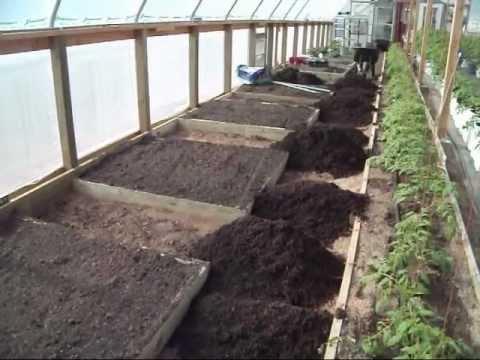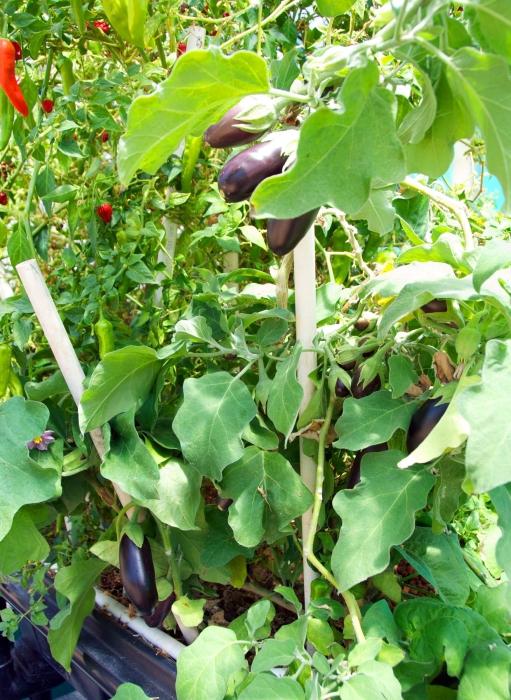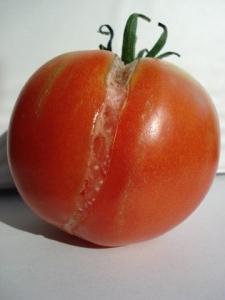Tomatoes in the greenhouse. Subtlety of cultivation
Tomatoes - the culture is ambiguous. Some people manage to grow large crops from year to year, and somebody can not find an approach to them. But to meet someone who does not like tomatoes is very difficult. The principles of growing this wonderful culture in the greenhouse and in the open ground are similar, but there are also differences.
Growing tomatoes in a greenhouse is worth givingattention to several important aspects: reasonable placement of seedlings, temperature conditions, watering, planting, fertilizing, possible overheating of the greenhouse, combating diseases and pests.

Planting tomatoes in a greenhouse should be carried out withtaking into account the distances between plants recommended for a particular variety or hybrid. You can not plant seedlings closely, in the future it can lead to diseases and the multiplication of pests.
For good development of tomatoes, the temperature in the greenhouse should be maintained at 20-25 0C, and at night 12-14 0FROM. Sharp temperature changes during the day are not particularly desirable. If this happens during the budding period, the tomato leaves may turn yellow, and the yellowness will be bluish. If the temperature in the greenhouse falls below +10 0C, the pollen will not ripen, but if it rises above +35 0C, the pollen will become sterile.

Tomatoes must provide regular watering. How to water tomatoes in a greenhouse is difficult to say. As soon as the top layer of the soil dries well, it is necessary to water, and necessarily with warm water, under the root. These plants prefer moist soil, and the air in the greenhouse should be dry.
Tomatoes in the greenhouse preferably growindeterminate, with obligatory garter. To shape them better in one stem. Stephens need to be removed, not allowing them to grow more than 5 cm. In this case, tomatoes will not experience severe stress. On the stem, optimally build 10 fruit brushes, and then remove the apical bud. If in a greenhouse low-growing varieties without trellises are grown, then you need to leave 3-4 flower brushes and remove all stepsons.
Tomatoes in the greenhouse respond well to fertilizing. Without them, you can not grow a good crop. For a season it is necessary to spend at least 3-4 subcortex with organomineral fertilizers. Tomatoes better assimilate additional nutrition in liquid form. It is desirable and foliar top dressing, for example, spraying with boron preparations will be useful for setting fruit.

Diseases and pests need to be able to identifyand know the methods by which you can get rid of them. It is much easier to prevent their appearance than to fight it with consequences. To avoid duplicity and spotted ripening of fruits, you need a reasonable application of potassium fertilizers. Avoid cracking of fruits can be normalized watering, which is preferably carried out in the morning. The leaves are curled and folded when the stepchildren are not removed in time and the wrong shape is formed. In order to avoid the physiological form of vertex rot, correct irrigation (infrequent, but deep) is needed. To avoid fusariosis of fruits, it is necessary to eliminate the increased humidity of air in the greenhouse, i.e. regularly air it.
It is equally important to remove the lower aging leaves from the greenhouse tomatoes, especially the yellowing ones, they are affected by diseases among the first.
If pests have appeared, then they needto get rid necessarily. You can use folk remedies, or maybe chemical preparations - it depends on the number and stage of pest development.
Foreseeing everything is difficult, but, following the above recommendations, you can count on an excellent harvest.








